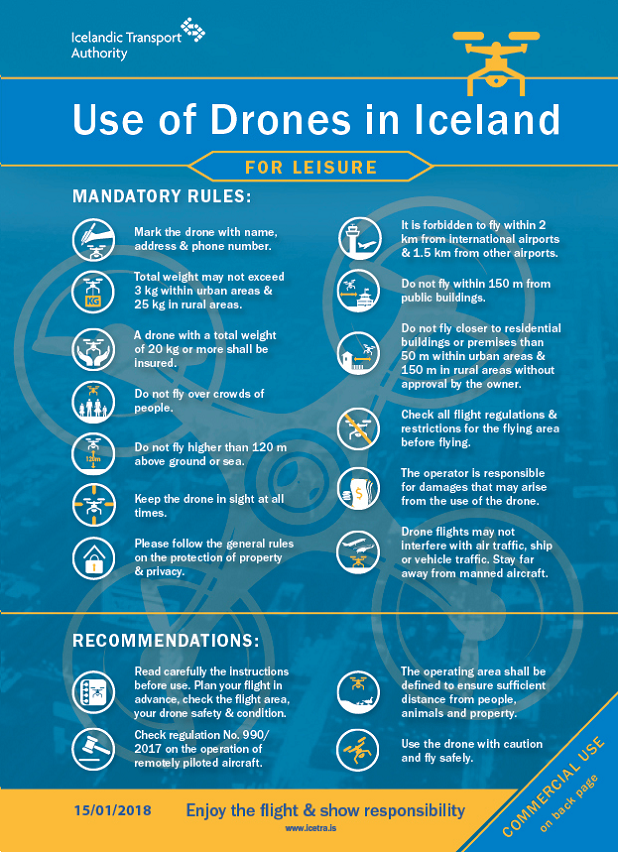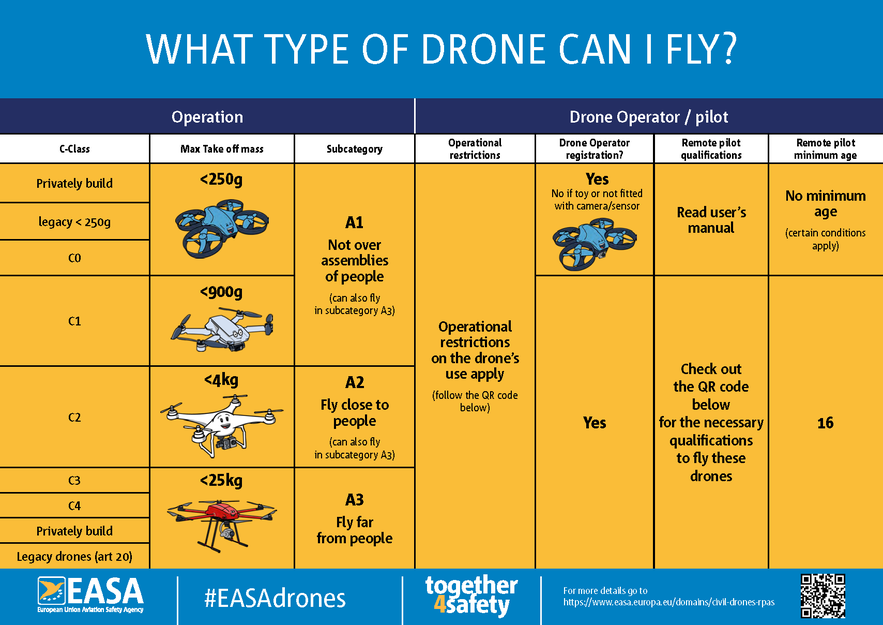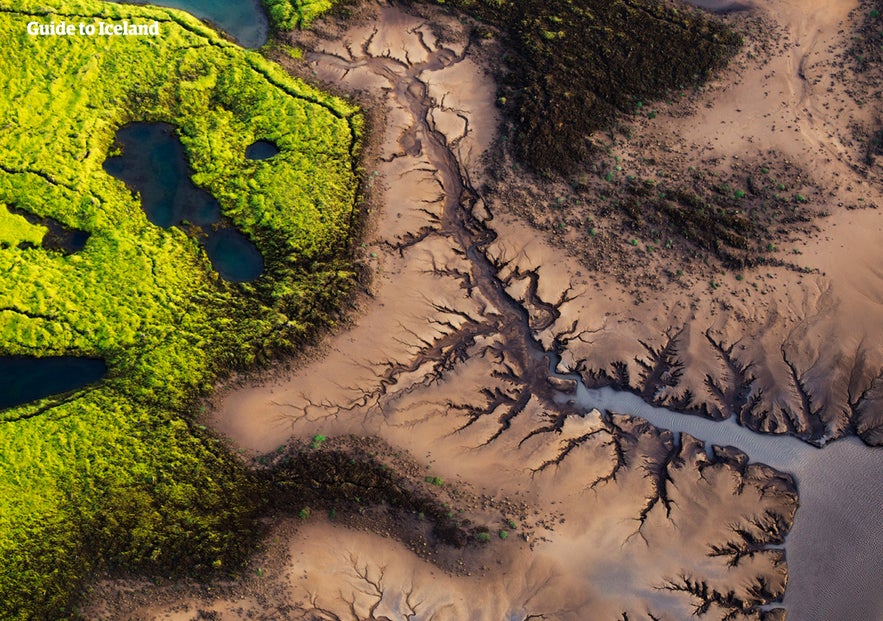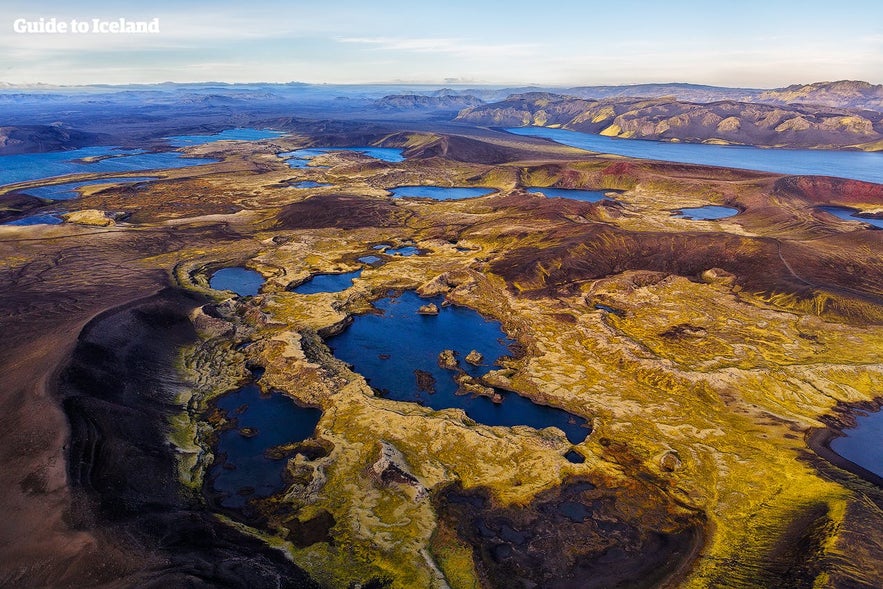
Flying Drones in Iceland | All You Need To Know

- Current Drone Regulations in Iceland
- Upcoming Changes to Drone Regulations in Iceland
- What to Know About the Open Category
- What to Know About the Specific Category
- Bringing Your Drone on an Airplane
- No Drone Zones in Iceland
- Best Locations for Drone Photography in Iceland
- Applying for Drone Exemption in Iceland
- Summary of Drones in Iceland

What are the current rules and regulations regarding the use of drones in Iceland? Is it possible to fly your drone everywhere, and where are the best spots? Read on to learn all you need to know about flying drones in Iceland, with some incredible drone footage!
Over the last decade, UAVs (Unmanned aerial Vehicles), or "drone technology," have come in leaps and bounds, transforming from the latest in military equipment to portable home devices capable of capturing 4K footage and photographs.
It has, without doubt, ignited a photographic renaissance, a digital revolution where photographers of all styles, creeds, and backgrounds can now access angles and locations that once would have been impossible to reach. It is, in short, an exciting time to get into photography!
Iceland has become a particular favorite location for drone photographers over the last few years. So popular in fact, that you can even embark on specialized photography tours with a professional to guide you.
As you explore Iceland with a tour or a rental car, you'll see an abundance of stunning waterfalls, towering glaciers, volcanos, winding rivers, and vast lava fields. You're surrounded by amazing photo opportunities, no matter where your accommodation in Iceland is located.
Capture the wild natural beauty from impossible angles by bringing your drone with you on your adventure. Read on to learn all you need to know about flying a drone in Iceland.
- See also: Photography in Iceland
- Read Best Itineraries for Photography Lovers in Iceland for more information
Current Drone Regulations in Iceland
Like any new technology, there has been a period of experimentation and tolerance regarding drones, which legislators have had to work hard to try and deal with. This lack of regulation has, in the past, led to some truly incredible and foolhardy incidents.
Drones have been flown over airports and the White House, been used to smuggle narcotics into prison, and, on a lighter note, have been used to make cats (and other household pets) levitate around the room like strange cyborg birds. Such incidents can go on for only so long!
Back in 2016, drone hobbyists were becoming a serious problem to the local Icelanders, largely due to the sheer amount of them and the lack of experience of their pilots. As Brandur Bjarnason Karlsson of the Icelandic Drone Association said at the time:
"People don’t like seeing drones being flown over so many people. There isn’t a lot of experience yet with ensuring the safe use of these devices."
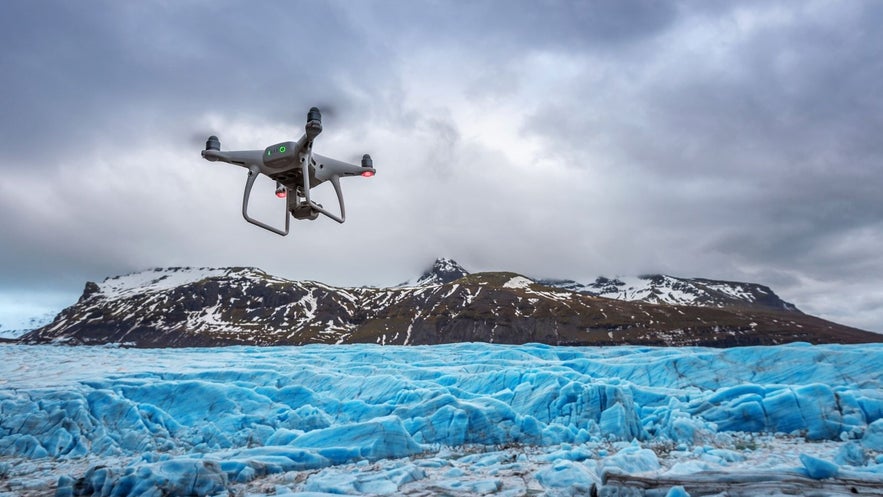
This was taken on board by the Icelandic government, which made moves to start regulating their usage. In regard to contemporary Icelandic legislation, it should first be noted that both recreational and commercial drone users do not need to have a drone permit in Iceland, though the country will soon take up the current drone regulations of the European Union, likely sometime in 2025.
With that being said, there are a number of important rules that must be adhered to at all times.
Those who fail to adhere to such regulations face fines, having their equipment taken away, and even arrest. It should also be made clear that drone regulations are liable to change quickly, meaning you should keep yourself updated regularly to avoid any run-ins with the law.
Below are the following rules regarding drone use in Iceland (As of 2024):
-
Always respect the privacy of others when flying your drone. Do not fly your drone over crowds or people.
-
Do not exceed a maximum height of 394 feet (120 meters).
-
Only fly your drone during the daylight hours, and only then in clear, bright weather with little wind. Keep the drone within eyesight.
-
The use of drones and camera drones is prohibited near government or military facilities.
-
You are not permitted to fly your drone in Reykjavik above the height of the buildings. This is because of the proximity of Reykjavik Domestic Airport to the downtown area. In urban areas, drones must weigh no more than 6.6 pounds (3 kilograms) and display your name, address, and phone number.
-
It is not permitted to fly your drones within 1.24 miles (2 kilometers) of a commercial airport or 0.93 miles (1.5 kilometers) near any other airport. Other excluded areas include all national parks, hospitals, state institutes, and power plants.
-
You must also not fly closer than 492 feet (150 meters) to any public building or any other building in rural areas. In urban areas, you must not fly closer than 164 feet (50 meters) to any building or premises. If you have express permission from the landowner in the case of residential buildings, these laws do not apply.
Despite these regulations, the misuse of drones continues to occur regularly in Iceland. In the past, there have been a number of stories reported linked to such behavior, including a case where a drone pilot came dangerously close to interrupting a rescue operation, and another had his machine banned after using it to spy into people's living rooms! If you wish to keep your name out of the papers, ensure that you act as responsibly as possible while flying your drone in Iceland.
Below, you can read the guidelines as specified by the Icelandic Transport Authority.
- See also: What To Do & Where To Go In Iceland
- See also: Movie Locations in Iceland: The Complete List
Upcoming Changes to Drone Regulations in Iceland
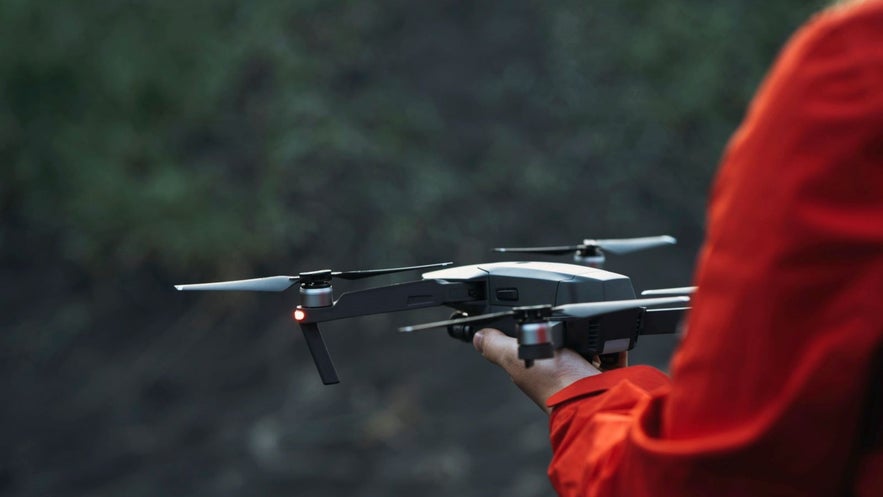 As of 2020, the European Union Aviation Safety Agency (EASA) has developed new regulations regarding the use of drones within all EU member states and other participating countries. The intent is to harmonize the rules for operating drones in the European airspace. These new regulations have not yet taken effect in Iceland but are expected to sometime in 2025.
As of 2020, the European Union Aviation Safety Agency (EASA) has developed new regulations regarding the use of drones within all EU member states and other participating countries. The intent is to harmonize the rules for operating drones in the European airspace. These new regulations have not yet taken effect in Iceland but are expected to sometime in 2025.
The regulations mean that drone operators within the European Union must be registered, regardless of whether they use drones for leisure or commercial use. You must pay a registration fee, and it is valid for 5 years, after which you'll need to renew your registration again. You'll then receive a registration ID number, which you will use to mark any drone you own.
If you don't live within the European Union, you must register with the local aviation authority of the first EU country you visit. In Iceland, this is the Icelandic Transport Authority (ITA), and you can easily register on the ITA flydrone website before you arrive.
Your registration will also be valid in every other EU country you travel to within 5 years. If you have already registered, you don't have to do it again when traveling to another member state.
Drone operations are split into three main categories depending on the intended use. There are the open category, the specific category, and the certified category. Most drone operators only need to be concerned with the open category, though the specific category may apply if you have a special project in mind. Restrictions and rules then depend on the weight of your drone.
The certified category applies to different kinds of drones than ones usually used for recreation, such as air taxis or delivery services, so it won't be covered here. You can read more about the certified category on the EASA website.
Depending on the weight of your drone, you may also need to complete a simple online training program and exam. You don't need to worry about this if your drone is under 0.55 pounds (250 grams), as you'll only need to register for your ID number and read your drone's manual carefully. If it's over that weight limit, you must pass the exam and receive a "Remote Pilot Certificate of Competency." The process only takes a few hours, so don't let that stop you from bringing your drone!
What to Know About the Open Category

Photo from the European Union Aviation Safety Agency
Most leisure and commercial use of drones will fall into the open category. To operate within it, you must maintain a visual line of sight with your drone. It's not allowed to fly higher than 393.7 feet (120 meters) or over crowds, and you can not use it to transport dangerous goods or release objects.
Within, there are subcategories (A1, A2, A3) defining where drones can fly relative to people depending on their maximum take-off mass. Each subcategory has its own set of restrictions for how and where you can fly your drone.
-
A1: Drones under 1.9 pounds (900 grams)
-
Flight over uninvolved people should be minimized. No flight over assemblies of people.
-
-
A2: Drones under 8.8 pounds (4 kilograms)
-
No flight close to people. Keep a horizontal distance of 164 feet (50 meters) from people.
-
-
A3: Drones under 55.1 pounds (25 kilograms)
-
No flight close to people or within 492 feet (150 meters) of residential, commercial, or industrial areas.
-
You can see further clarifications of the restrictions in the table below:
Photo from the European Union Aviation Safety Agency
To make the registration process clearer, all drones produced after 2024 will have transmitters and include a clear class number, such as C0, C1, C2, etc. This helps owners determine which restrictions apply and if they need to complete training.
Some drones already have these features, but if yours doesn't, then it should be operated according to the restrictions of the A3 subcategory if under 55.1 pounds (25 kilograms) or the A1 subcategory if under 0.55 pounds (250 grams).
What to Know About the Specific Category
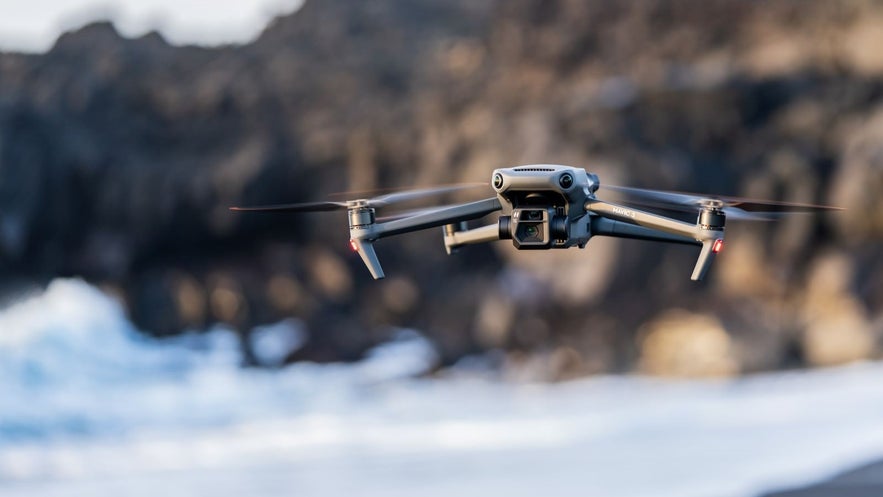 In the EU drone rules, the specific category covers operations with a higher risk than those allowed in the open category. These are operations that cannot be conducted under the standard scenarios predefined in the open category due to factors such as the proximity to uninvolved people, the weight of the drone, or operational goals that may increase risk.
In the EU drone rules, the specific category covers operations with a higher risk than those allowed in the open category. These are operations that cannot be conducted under the standard scenarios predefined in the open category due to factors such as the proximity to uninvolved people, the weight of the drone, or operational goals that may increase risk.
For this, you must contact the Icelandic Transport Authority for authorization. If the operation is riskier and more complex, you may be required to do a risk assessment as well.
Bringing Your Drone on an Airplane
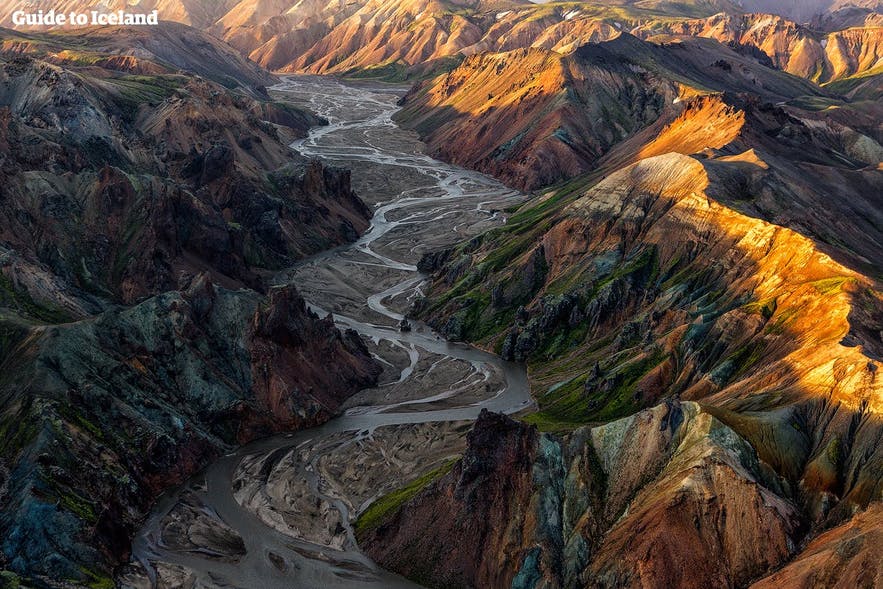
If you already own a drone, chances are that you will want to bring it with you on your holiday to Iceland. That, naturally, poses some tricky questions! Do you bring it through check-in or carry-on luggage? Are drone batteries allowed onto an aircraft? Should you buy a specialist travel bag?
Questions such as these will have to be weighed up before your flight, though it is always recommended that you check the specific details with your airline. That said, there is universal advice regarding traveling with a drone.
First of all, remember that drone technology can be thin and fragile, thus incapable of taking the often-negligent way that bags are moved from the airport to the aircraft and back again. If you are planning on checking in your drone, make sure that it is fully protected inside the bag and label your suitcase as “FRAGILE.”
Also, keep in mind the fact that, according to the Montreal Convention, airlines are only liable for approximately $1000 USD in baggage loss. If you have to take a number of connecting flights to arrive in Iceland, know that with each stop, the chances of damage or stolen property increase, marking a pretty risky beginning to your vacation here.
- See Also: Top Activities in Iceland for Adrenaline Junkies
- See also: Dumbest Things to Do in Iceland
- See also: Weather in Iceland and Best Time to Visit
Thankfully, there are a wide variety of drones available, all different shapes and sizes. Drones such as the DJI MINI 4 PRO and the DJI Mavic are all mobile enough to be brought on the plane with you, while bigger drones are, more often than not, shipped with full insurance to the destination separately. This would include such models as DJI Inspire.
When it comes down to a specialist drone bag, it is always recommended that you carry your equipment in luggage specifically designed for it. This means ample protection and organized sections to store different parts of your drone.
Know that “hard shell” bags are particularly advised if you plan to travel extensively with your drone, though these will likely cut into your budget more so than a “soft shell.”
Another important factor is that lipo battery bags are essential when traveling overseas with a drone. If you do not have a lipo battery bag, the airline will likely confiscate the batteries from you as they are considered to be “dangerous goods.”
One of the reasons why lipo battery bags are so essential is because they are sealed, thus ensuring that the battery does not catch fire.
No Drone Zones in Iceland
Iceland is a land known for its staggering natural vistas, incredible attractions, and open isolation, all three being major draws to the world’s photographers and filmmakers. On almost every tour sold in Iceland, one of the major instructions to guests is simple: bring your camera!
This is a country so fantastical that it often defies belief. Footage is a sure-fire way of bringing your experience back to life, making for a far more interesting souvenir than, say, a Puffin teddybear or a Hallgrimskirkja church snowglobe.
Be aware that since 2016, the recreational use of drones has been banned in all national parks in Iceland. That list encompasses Vatnajokull National Park, Snaefellsjokull National Park, and Thingvellir National Park.
Please note that Vatnajokull National Park is huge, and new areas are incorporated into it regularly. For example, Skaftafell Nature Reserve and the Jokulsarlon Glacier Lagoon are part of this park, so drones are forbidden at both!
In the map below, you can see the off-limits areas for drones in Iceland. The red areas have strict rules and regulations for flight, and the green areas require special permission for drone use. Large restricted areas, such as the Vatnajokull National Park and the Breidafjordur fjord, are represented by green stripes.
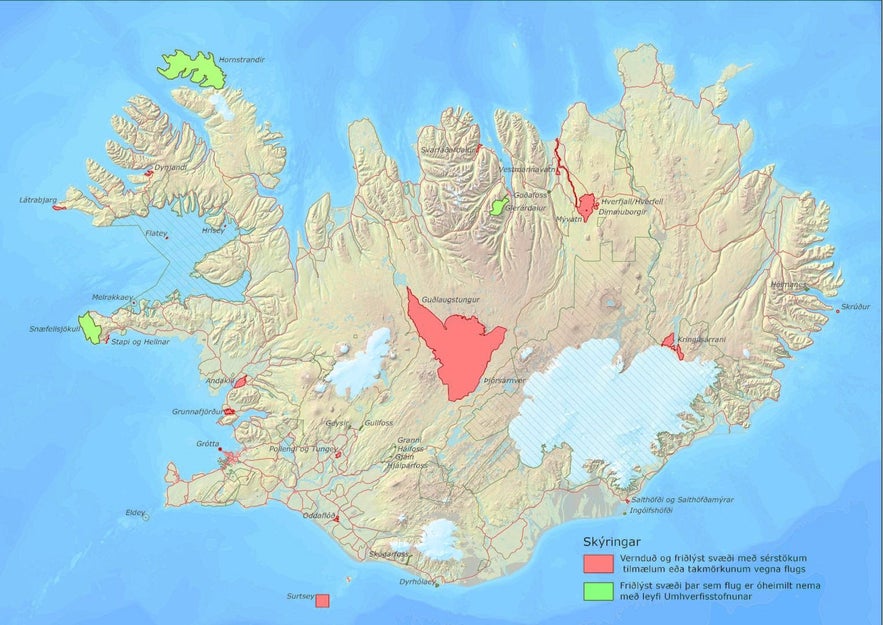
Photo from the Environment Agency of Iceland
This regulation has been put in place to protect the region's wildlife, as well as to preserve the peace and tranquility that many are trying to find in such locations.
Iceland's national parks have a peaceful ambiance. Thus, the temptation may be there to try and get away with it. In short, don't! Many visitors will complain that the low-flying buzz of a drone takes away from their experience, and park staff will act on the law if they spot you.
This is not a total ban, however; those flying drones for science and research purposes are still allowed to fly at Vatnajokull, though permission must be granted to do so. You can also apply for a special exemption for each area you want to film.
As well as within all national parks, using drones at many of Iceland's most popular attractions is now prohibited. Due to the increasing number of visitors and drone ownership, these restrictions have been put in place to preserve the visitor's experience, which would undoubtedly be hampered if many drones were buzzing around.
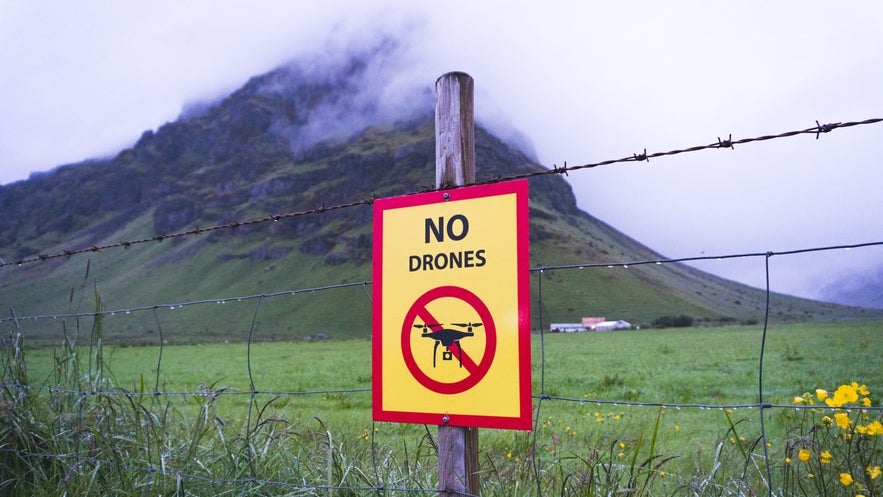 These attractions include the famous waterfalls Gullfoss, Seljalandsfoss, and Skogafoss, as well as Reynisfjara black sand beach. To find out whether the use of drones is prohibited, look out for yellow signs that feature a picture of a drone with a red line through it, as well as the words "DRONES ARE FORBIDDEN." If you are not in a national park and you cannot see one of these signs, you can assume you can fly your drone within the government guidelines mentioned above.
These attractions include the famous waterfalls Gullfoss, Seljalandsfoss, and Skogafoss, as well as Reynisfjara black sand beach. To find out whether the use of drones is prohibited, look out for yellow signs that feature a picture of a drone with a red line through it, as well as the words "DRONES ARE FORBIDDEN." If you are not in a national park and you cannot see one of these signs, you can assume you can fly your drone within the government guidelines mentioned above.
Best Locations for Drone Photography in Iceland
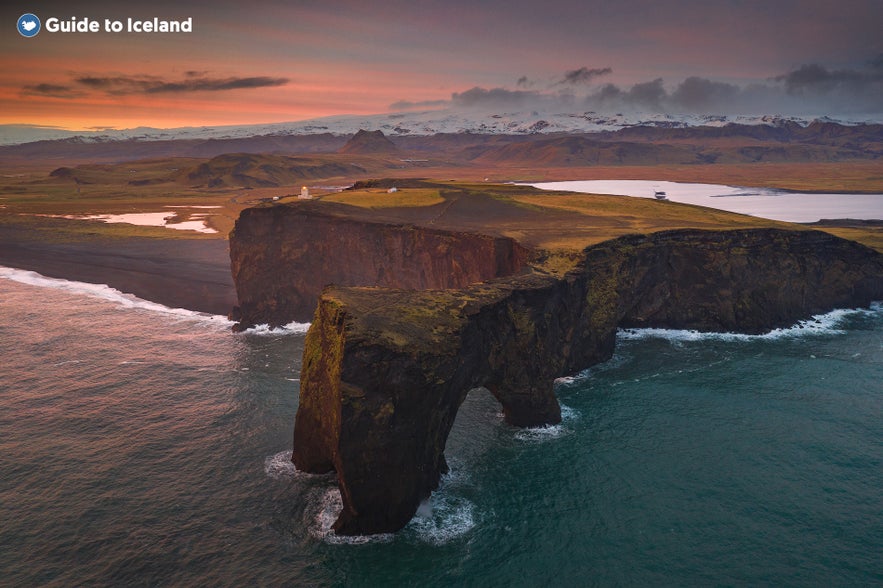 The Golden Circle, the South Coast, and the Snaefellsnes peninsula are the most popular regions among visitors to Iceland. However, drones are not allowed at many of the main attractions! Nonetheless, there are beautiful landscapes to be found all along the Ring Road, where you can capture winding rivers, lava fields, glaciers, and volcanic craters.
The Golden Circle, the South Coast, and the Snaefellsnes peninsula are the most popular regions among visitors to Iceland. However, drones are not allowed at many of the main attractions! Nonetheless, there are beautiful landscapes to be found all along the Ring Road, where you can capture winding rivers, lava fields, glaciers, and volcanic craters.
You can even embark on a convenient tour of these regions, like with this beautiful photography day tour at the Snaefellsnes peninsula or this incredible full-day photoshoot tour of the South Coast, which includes a glacier hike! Both have transfers from Reykjavik, so you don't need to worry about driving yourself. Alternatively, you can explore all that Iceland has to offer with a self-drive tour.
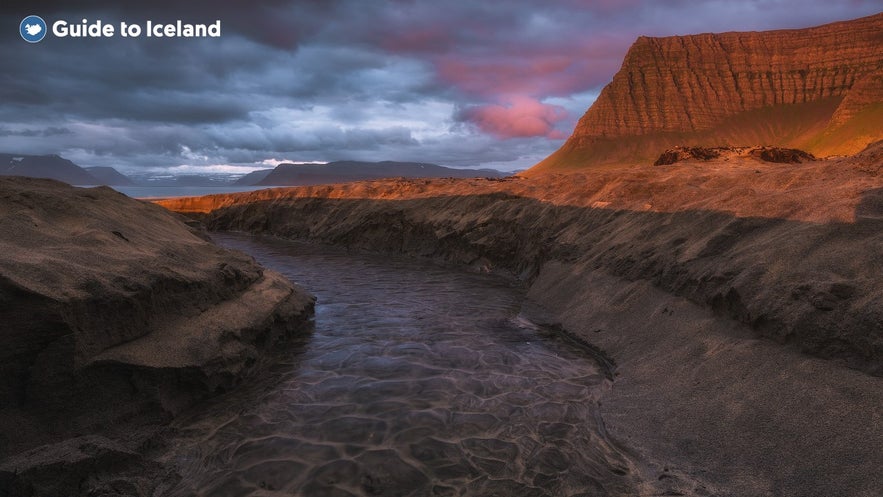 A popular location for drone photography is the Westfjords, an area of incredible natural vistas, rugged coastlines, and lively bird cliffs. The Westfjords are, arguably, one of the best locations to use your drone in Iceland, thanks to the lack of other people, making the practice far safer.
A popular location for drone photography is the Westfjords, an area of incredible natural vistas, rugged coastlines, and lively bird cliffs. The Westfjords are, arguably, one of the best locations to use your drone in Iceland, thanks to the lack of other people, making the practice far safer.
When visiting the Westfjords, you can take footage of locations like the Arnarfjordur fjord or Raudisandur beach. However, flying a drone at the Hornstrandir Nature Reserve and Latrabjarg cliffs is forbidden to ensure that wildlife is not disturbed. Restrictions have also been put in place by the beautiful Dynjandi waterfall to ensure peace and quiet in the area.
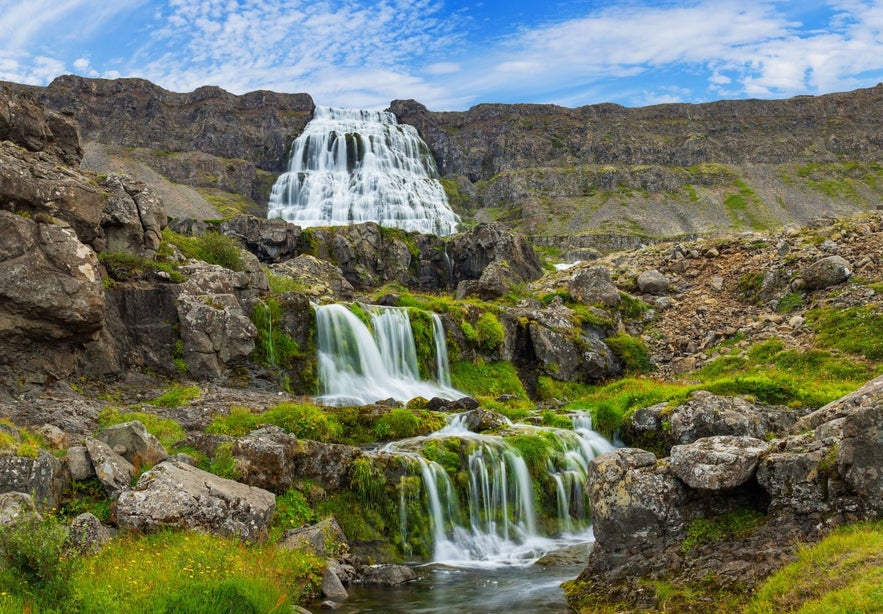 In truth, the aforementioned regions are mere recommendations. Frankly, the entire country is suited to drone photography, making it somewhat of an endless arena of possibilities for artists and filmmakers. However, you will need to consider some restrictions.
In truth, the aforementioned regions are mere recommendations. Frankly, the entire country is suited to drone photography, making it somewhat of an endless arena of possibilities for artists and filmmakers. However, you will need to consider some restrictions.
One of the great pleasures of having a drone handy is that, during your travels, you can stop off where you see fit to capture the incredible landscapes around you.
Drone film and photography also make for an incredible souvenir, providing a fantastic and captivating alternative to showing friends and family the old holiday slideshow.
But, as already mentioned, piloting a drone in Iceland requires an up-to-date knowledge of the legislation, as well as practical experience flying. To maximize your drone use in Iceland, it is highly advised to practice your composition and handling beforehand so as not to be disappointed when here.
Applying for Drone Exemption in Iceland
While many of Iceland's most iconic natural attractions are located within protected areas, you may be able to film them. As previously mentioned, you can apply for an exemption to specific drone provisions.
The possible exemptions include:
-
Maximum take-off weight in urban and rural areas
-
Maximum altitude
-
Flying over crowds or out of sight
-
Exemptions of specific aerial restrictions
-
Exemptions from clauses in flight operations manual
You can send your application for exemption from drone regulation online, though you must meet a number of conditions. You must send in a safety assessment, your operations manual, a description of equipment and instruments, and a map of the area you'll be flying over. Additionally, you must include information about the project and the drone operator, and you must pay a processing fee of 41,100 ISK, or around 293 USD.
Summary of Drones in Iceland
Flying drones in Iceland offers an unrivaled opportunity to capture some of the most striking landscapes on Earth from a bird's-eye view. The key is to fly responsibly, adhering to the local regulations designed to preserve the natural beauty and respect the privacy of others.
With responsible drone usage, you'll not only avoid fines and the potential confiscation of your equipment but also ensure that the skies over Iceland remain safe and welcoming for everyone. With a bit of planning, your drone footage can bring a piece of Iceland's beauty into your collection of travel memories, all while preserving the integrity of this incredible landscape for future visitors.
Will you bring your drone to Iceland? What type of drone will you bring? Which locations do you most want to capture? Is there anything we missed in our guide? Make sure to share your thoughts and experience in the comments below!
Andre spændende artikler

Camping på Island | Alt hvad du behøver at vide
Foto af Pavel Brodsky Drømmer du om at vågne op til solopgangen over en storslået fjord? Eller at falde i søvn mellem en perlerække af smukke bjerge med nordlyset dansende over dit hoved? I så fald...Læs mereKort over Island
Find det kort over Island, du har brug for, med disse 20 islandske seværdighedskort. Vi har lavet alle de væsentlige kort over Islands vigtigste attraktioner i Google Maps for nemt at hjælpe dig med...Læs mereHvor dyrt er der på Island? Hvornår du skal rejse og hvordan du sparer penge
Find ud af, hvor meget en rejse til Island koster, så du bedre kan lægge et budget for din rejse. Hvor dyrt er der på Island? Hvordan er tilstanden for den islandske valuta? Læs videre for at finde...Læs mere

Download Islands største rejsemarkedsplads til din telefon for at administrere hele din rejse på ét sted
Scan denne QR-kode med dit telefonkamera, og tryk på det link, der vises, for at lægge Islands største rejsemarkedsplads i lommen. Indtast dit telefonnummer eller din e-mailadresse for at modtage en sms eller en e-mail med downloadlinket.
